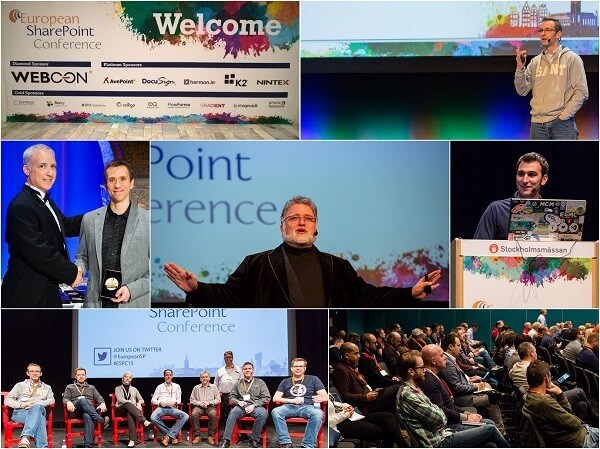In my second Social 101 session presented this week at the Worldwide Partner Conference (#WPC13, www.digitalwpc.com) in Houston, I tried to shed some light on the confusion between social features in SharePoint 2013 and Yammer. My session directly followed that of the Yammer team, who stood by throughout my session (I suspect to ensure that I didn’t say anything crazy).
It’s one of the most common questions I’m asked as I travel the world talking about SharePoint and general collaboration topics. Social collaboration has certainly become one of the hottest topics in the past year (and my company Axceler has even expanded into the social governance space, with our new ViewPoint offering, to the right), especially since Microsoft’s $1.2B acquisition of Yammer one year ago. But within the SharePoint space, my take on things is that this has less to do with genuine interest in social as it does with frustration over the complexity of SharePoint – and the failures of many organizations to properly design and implement the platform in a way that end users want and need. Now, right there I am going to earn some hate mail from the social kool aid drinkers, but hear me out.
One of the problems with SharePoint has always been that the marketing enthusiasm has outpaced the deployment reality. SharePoint is a powerful platform, and it can be very complex. With power tends to come complexity. In an effort to “keep things simple,” many organizations would simply roll it out, and flip every switch with an “I hope it works out” attitude. The ‘Hail Mary’ collaboration strategy, if you will. And then when people had a difficult time figuring out how to incorporate the more advanced features into their work-lives (whether due to education issues, or because of the lack of alignment between platform and business objectives), adoption was not there, and the platform was blamed. There are technical issues with every technology platform, but most real SharePoint issues have more to do with implementation shortcomings than technology.
Then came social collaboration, with a simple message and easy implementation, and better yet – a quick uptick in end user adoption and engagement. Add to that the acquisition and Microsoft’s tremendous marketing machine, and suddenly organizations believe that Yammer can solve all of their user adoption ills. Maybe it can, or maybe it can’t. My message is that if your SharePoint implementation failed due to a lack of business alignment, then so will Yammer. It’s a larger topic than I intended to cover here, but an important one.
Within this presentation, I tried to keep my message simple: social within SharePoint 2013 is about structured collaboration, while Yammer is about unstructured collaboration. The use cases are generally different – it’s an apples versus oranges comparison, in many cases.
If your collaboration is structured – meaning, if your collaboration is around content that is managed within team sites that are secure, have workflow and forms associated with it, are process-intensive, tied closely to a detailed taxonomy, and where you need to comply with strict auditing and compliance governance rules – then social collaboration within SharePoint is probably the correct direction for you. If your collaboration is unstructured – meaning, if your collaboration is not necessarily tied to content or process, and your interactions are more ad hoc and flexibility and speed are paramount – then Yammer is the correct direction for you.
My slides are below, and provide a quick snapshot comparison of the features of SharePoint vs Yammer:
- Yammer is only online. There is not, nor will there ever be, an on-premises version.
- The Yammer newsfeed is not (currently, or in the foreseeable roadmap) integrated to the follow/share/tag capabilities within SharePoint on prem or SharePoint online. If you want the rich social collaboration features tied to your activities within SharePoint, you need to use the SharePoint native newsfeed.
- SharePoint will release new social features at a much slower pace than Yammer. Yammer provides updates as quickly as weekly, which is only possible through their online delivery model. So if always having the latest/greatest version of the product is critical to you, then Yammer is the right choice.
- Yammer governance is limited. Security is at two levels (in the paid version): who can access a network, and who can access a private group. The platform was designed intentionally as an “open” platform, which is part of what makes it so powerful. But for more managed environments, this may be seen as a risk.
As a SharePoint MVP, I am a huge fan of SharePoint, of course, but I have also become an avid Yammer user. I am currently a member of 9 separate networks, and use 5 of them actively throughout the day. It has simply become the way in which I work, and as a remote worker, has greatly improved my ability to gain visibility, and give visibility, with the rest of my company.
Microsoft is working hard to provide a more clear marketing message on the differences between the two platforms, and offers some options for integration – such as a Yammer web part that you can drop into a team site, allowing you to see a Yammer Group newsfeed side-by-side with your SharePoint newsfeed. But if you’re just not sure how to move forward, I encourage you to go and try Yammer for free, test it out with your team, and figure out how best to fit social collaboration into your organization (I recommend joining the open group SPYam, with thousands of SharePoint experts sharing their expertise). Part of what has made Yammer so successful has been their rapid innovation and testing model – and you need to do the same. try it, test it, talk about it with your end users, adjust and test some more, and then build out your social strategy based on an understanding of what will work best for your own culture and collaboration needs.
Christian was a speaker at the ESPC 2013. Check out Christian’s blog for more insightfull content!
For more expert information on Social check out the eBook ‘Socialized! How the Most Successful Businesses Harness the Power of Social‘ by Mark Fidelman. Download Now>>











